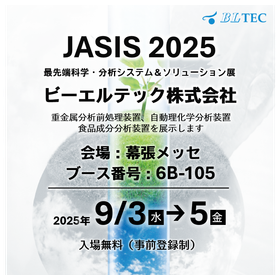Disaster prevention and mitigation using multi-parameter phased array weather radar.
Social Infrastructure (Saitama University Research Seed Collection 2025-27 p.19)
Keywords: Landslide disaster, meteorological disaster, weather radar, inland flooding, microtopography
Saitama University, in collaboration with the Disaster Prevention Research Institute, the National Institute of Information and Communications Technology, and the Japan Meteorological Society, signed an agreement on March 6, 2019 (the "Agreement on Collaborative Cooperation for Disaster Mitigation Utilizing MP-PAWR and Other Technologies"). This agreement aims to promote collaboration utilizing the Multi-Parameter Phased Array Weather Radar (hereinafter referred to as MP-PAWR: see photo), which was developed and installed as part of the research project "Research and Development of Heavy Rain and Tornado Prediction Technologies" under the first phase of the Strategic Innovation Creation Program focusing on "Strengthening Resilient Disaster Prevention and Mitigation Functions." The goal is to contribute to the creation of innovations in the field of meteorological disaster reduction and the establishment of a resilient society. Recently, meteorological disasters have occurred almost every year, leading to flooding damage due to internal water overflow. Areas that experience flooding have microtopographical features. For example, around Saitama University, as shown in the diagram, natural levees have developed on both sides of the old river channel, surrounding the floodplain. By identifying areas where rainwater tends to accumulate due to such microtopography and estimating the rainfall in those areas using MP-PAWR, it is believed that it will be possible to predict flooding depth early on.
Inquire About This Product
basic information
Masahiko Osada, Professor Graduate School of Science and Technology, Department of Environmental Social Infrastructure, Field of Social Infrastructure Creation 【Recent Research Themes】 ● Utilization of IoT Sensors ● Estimation of Rock Mass Physical Properties Using Atmospheric Pressure Variations ● Rockfall Hazard Assessment Using Millimeter-Wave Radar ● Evaporation Measurement Using Infrared Thermography ● Stability Evaluation Considering the Weathering Process of Unlined Tunnels
Price range
Delivery Time
Applications/Examples of results
【Appeal Points to the Industry】 ● MP-PAWR is said to be the world's latest weather radar to date. ● One reason for this is that it uses polarization to obtain a wealth of information about raindrops. ● Another reason is that by using fan beam and digital beamforming technology, it can gather all-sky raindrop information by rotating the antenna. ● These capabilities allow for three-dimensional observations of all-sky raindrop information at 30-second intervals. 【Examples of Practical Use, Applications, and Utilization】 ● Real-time quick look: https://pawr.nict.go.jp/saitama/index.html ● Real-time estimation of flooding depth ● Estimation of damage areas for flooding above and below floors
Detailed information
-

Color-coded elevation map created by yourself around Saitama University
catalog(1)
Download All CatalogsCompany information
The Saitama University Open Innovation Center is a center that functions as a liaison office for industry-academia-government collaboration. It consists of three departments: the Industry-Academia-Government Collaboration Department, the Intellectual Property Department, and the Startup Support Department, each staffed with coordinators well-versed in various fields. The center's activities include solving technical challenges in companies, supporting the implementation of joint research, and conducting technology transfer aimed at introducing and utilizing Saitama University's intellectual property.








![[Ion Chromatography Technical Documentation] Basic Principles of Ion Chromatography](https://image.mono.ipros.com/public/product/image/04d/2000207845/IPROS00856177378060656898.jpeg?w=280&h=280)


